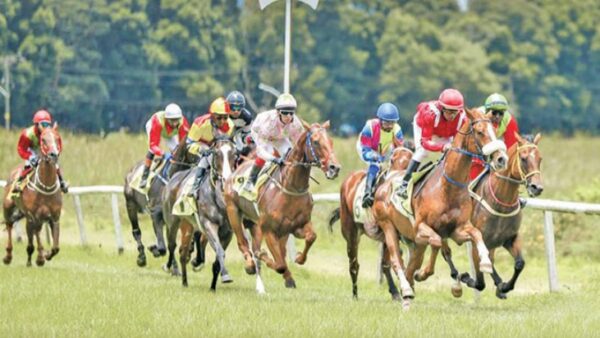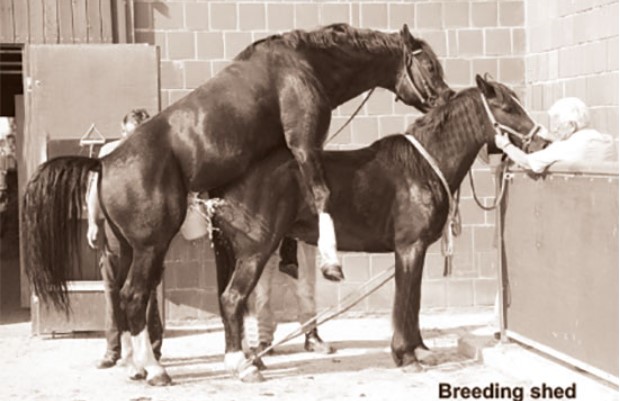Horse Racing in Sri Lanka-by Vijaya Chandrasoma

Source:Island
In October of 1987, the government agreed to a visit by a team from the New Zealand Export Import Corporation, to explore the possibilities of the resumption and development of horse racing and breeding in Sri Lanka. Horse racing was a popular sport in Sri Lanka during the 1950s, with a beautiful race course in the heart of Colombo. The Sport of Kings had all but disappeared from the Sri Lankan scene with the banning of the importation of racehorses and laws against gambling imposed by the nationalist purists of the then SLFP government. Laws that were observed in the breach in all other forms of gambling as long as these political hypocrites were duly and handsomely compensated.
Our neighbors, India has a well-established racing and breeding industry, with stallions imported from all over the world. Sri Lanka, on the other hand, did not breed horses, and horse racing was conducted using only imported horses. With the foreign exchange crisis of the late 1950s, the import of racehorses was prohibited, and horse racing in Colombo died a natural death. A very poor standard of pony racing continued during the “April Season” in Nuwara Eliya, when the elite in Colombo escaped the extreme heat to vacation for a couple of weeks in the year-long Spring climate of the hill country. The Nuwara Eliya racecourse provided a backdrop to the exhibition of dresses worn by Colombo’s ageing socialites, failing miserably in their efforts to emulate the fashions of Royal Ascot.
The tour of the New Zealand team was referred to the Ministry of Lands and Land Development, which included Mahaweli Authority. Minister Dissanayake chose me to liaise with the New Zealand team. Not a difficult choice, because I had an almost encyclopedic knowledge of British horse racing and race courses, knowledge gained at the cost of dissipation of family wealth which continues to the present day.
The New Zealanders visited Nuwara Eliya, which boasted a racecourse in a beautiful environment in the heart of the town, but sadly lacking in the basic amenities essential to the operation of a successful race course. Facilities like ample barns for trainers to house their strings of horses, breeding sheds, training tracks and a modern totalizator. Whether it had the potential for transformation into even an average racecourse acceptable to international horse racing aficionados was debatable.
However, the Mahaweli Authority had identified a piece of land near Katana, on the west coast of Colombo about five miles north of the international airport. The land was ideally suited for the construction of a first class, New Zealand/American style of a flat, dirt track with a circuit of about one mile. These types of flat dirt racecourses are the norm in the world today, and they have adjacent flat grass courses to be used a few races per week. These courses are sadly lacking in the beauty of the classic racecourses in England and France, like Epsom and Ascot in England and Longchamps and Chantilly in France. These beautiful exclusively grass courses are contoured to the undulations of the land, with tracks of manicured grass. The huge disadvantage to these grass topped courses is that a race meeting cannot last for more than five days, tops, as the grass gets cut up by the constant battering of the hooves of the horses six, sometimes eight races a day. So each grass track runs about six meetings per year at intervals used to repair the damaged grass. Dirt tracks, on the other hand, can be used for months on end, and have become increasingly popular over the years. Katana was planned to be such a dirt track, with an adjacent grass track to be used sparingly, with elaborate stands and totalizators to be built for the spectators.
New Zealand, though of the same physical size as the United Kingdom, has a population of about five million, compared to the U.K.’s population of over 60 million. However, the number of race tracks in each country is about the same, New Zealand with over 50 racecourses to the U.K.’s 60.
New Zealand has a glut of racehorses, stallions, broodmares they are desperate to export to developing nations. They also have a sophisticated totalizator software industry which they can also trade as a sine qua non for the development of a racing industry in Sri Lanka.

What they did not know was that their project was dead in the water from the outset. There was no way the Sri Lankan government would get involved in the development of a horse racing industry in the middle of an ethnic war. Minister Dissanayake perhaps thought that it was a project that could be looked into after the end of the ethnic hostilities. No one could predict that it would take 20+ years of terror and violence to reach the final conclusion of the war.
However, in spite of the continuing ethnic violence, the New Zealanders left Sri Lanka with high hopes. A few weeks after their visit, we received an invitation from the Export Import Corporation of New Zealand for a representative of the Authority to visit New Zealand, to study the resources they possessed to develop the industry in Sri Lanka. In their letter of invitation, they had mentioned me by name as the person they thought most likely to be of mutual benefit from such a tour, as they had been impressed by my knowledge of the subject. While I discussed with the Minister the futility of the tour as there was absolutely no chance of the project reaching fruition in the immediate future, I was hopeful for his ultimate approval of the invitation, as it would not cost the Sri Lankan government a penny. All expenses were to be hosted by the New Zealand government.
So my dream of the ultimate working holiday came true. I traveled via Singapore to Wellington, where I was accommodated in the corner suite at a Hyatt in downtown Wellington.
Our job was to thrash out a proposal for the introduction of a horse racing and breeding industry in Sri Lanka. I was really impressed with the work habits of my New Zealand counterparts. A car picked me up from my hotel at 7.45 a.m. and we were on the job in the Conference Room of the Corporation, working on the terms of the proposal to be submitted to government of Sri Lanka. We worked solid till about 1.00 p.m., repaired for a boozy lunch. My New Zealand counterparts returned to the office to check on any urgent developments and faxes, and then called it a day. Now that’s a workday that will appeal to everyone,
New Zealand also proposed to import into Sri Lanka brood mares and stallions to start off a breeding program, based initially in Nuwara Eliya, ultimately moving to Katana, when that facility was ready for operations. They provided blueprints for the racecourse, stands and the ancillary facilities necessary for a first class horseracing and Totalizator operation. Finances were not discussed in detail. These would follow after the Cabinet of Sri Lanka’s government approved the project on principle.
The New Zealanders were excellent hosts, and on the evenings they did not have plans for me to visit some of the tracks in the environs of Wellington, notably the world class Trentham racecourse, they wined and dined me in great style in their homes.
We also took a plane to Auckland, where we spent two days touring the racecourses in Auckland and training facilities available in that city. My hosts had decided to travel back to Wellington by road, a 400-mile drive, stopping en route at Rotorua, where we visited a horse trainer’s facility, including the breeding shed. I was privileged to watch a stallion mating with a broodmare in the shed. Sadly, the whole operation lasted under a minute, and the mare gave a kick of frustration to the stomach of the stallion as he was dismounting her. Slam, bang, thank you, ma’am. Some things never change, no matter the species.
After two of the most enjoyable weeks I had spent in my life, I was ready to return, armed with the formal proposal to be submitted to our government. I had decided to change the routing of my return journey to take in stopovers at Melbourne and Bangkok. I had friends in Melbourne, and really enjoyed myself in their company for a few days in that beautiful city.
I had second thoughts about Bangkok, though. The only extramarital sex I have ever had was listening, ears pricked, to the sexual adventures of friends who had spent time in Bangkok. My ex-wife was also aware of the reputed lewd attractions of the city which had special appeal to dirty old men. If I had spent a couple of days in Bangkok, the suspicion of bad behavior would never fade, even had my actions been pristine. So I made one of the few intelligent decisions of my life, canceled the detour to Bangkok, and returned to Colombo on the direct Melbourne to Colombo Qantas flight. I was even able to buy my ex-wife a nice gift with the money I had planned to spend “sightseeing” in Bangkok.







